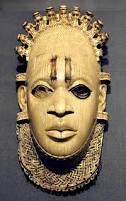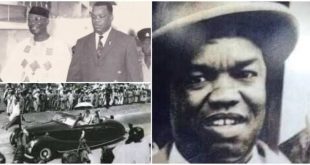
Reminisce and experience of the rich tapestry of African culture at FESTAC ‘77, a monumental international festival held in Lagos, Nigeria, from January 15 to February 12, 1977.
This grand event, officially known as the Second World Festival of Black and African Arts and Culture, celebrated the diverse and vibrant essence of African music, fine art, literature, drama, dance, and religion. It brought together 16,000 participants from 56 African nations and countries of the African Diaspora, all united in their shared heritage and cultural pride.
FESTAC ‘77 was more than just a festival; it was a powerful symbol of the spirit of Pan-Africanism and the resurgence of African culture. This vision, championed by influential leaders like Leopold Senghor and Aimé Césaire, came to life through an array of spectacular events.
The festival featured everything from the grand Festac Durbar and the colorful Boat Regatta to myriad performances and exhibitions, all designed to showcase the rich cultural heritage of Africa.
The Spirit of Pan-Africanism
The spirit of Pan-Africanism, which seeks to unify and uplift people of African descent worldwide, was the driving force behind what became known as FESTAC ‘77. This ideology was prominently featured in the festival’s programming and the diverse array of participants who gathered to celebrate their shared heritage.
Leopold Senghor, the first president of Senegal and a key proponent of Negritude, envisioned FESTAC as a platform for the revival and celebration of African culture.
Aimé Césaire, a poet and politician from Martinique, also saw the festival as a means to promote African cultural values and counter the legacy of colonialism.
The festival’s opening ceremony was a grand spectacle that set the tone for the entire event. It featured a parade of participants in traditional attire, each group representing their unique cultural heritage.
This parade was a vivid demonstration of the diversity and richness of African culture, highlighting the various traditions, languages, and customs of the participating nations.
Cultural Institutions Born from FESTAC ‘77.
One of the lasting legacies of FESTAC ‘77 was the establishment of cultural institutions that continue to influence African culture today. The Nigerian National Council of Arts and Culture (NNCAA) was created to preserve and promote Nigeria’s rich cultural heritage. This organisation has played a crucial role in organising cultural events, supporting artists, and ensuring that Nigeria’s cultural traditions are passed down to future generations.
The National Theatre (now bastardised) in Iganmu, Lagos, was another significant outcome of FESTAC ‘77. This iconic venue was constructed specifically for the festival and later became a central hub for cultural activities in Nigeria.
The National Theatre hosts a wide range of performances, from traditional dance and music to contemporary plays and art exhibitions. It stands as a monument to the festival’s legacy and a testament to the enduring importance of cultural institutions in promoting African heritage.
A Showcase of African Music and Dance.
FESTAC ‘77 featured an impressive array of music and dance performances that highlighted the incredible diversity of African musical traditions. In total, the festival staged about 150 music and dance shows, each offering a unique glimpse into the rhythms and melodies of Africa.
Traditional drumming, a central element of many African cultures, was prominently featured, along with contemporary musical styles that showcased the evolution of African music.
Dance performances were equally varied, ranging from traditional dances that have been passed down through generations to modern interpretations that blend African movements with contemporary choreography.
These performances provided a dynamic and engaging way for audiences to experience the vibrancy of African culture. The energy and passion of the dancers captivated audiences, creating unforgettable moments that celebrated the richness of African traditions.
Theatrical Performances and Storytelling
The festival also featured an impressive lineup of plays and theatrical performances, with about 50 productions staged over the course of the event. These performances ranged from traditional African storytelling to contemporary plays that explored themes relevant to African society and culture.
Theatrical performances provided a powerful medium for artists to express their creativity and address important social and cultural issues.
Traditional storytelling has always been a vital part of African culture, and FESTAC ‘77 provided a platform for these stories to be shared with a global audience. These performances often featured elaborate costumes, music, and dance, creating a multi-sensory experience that brought the stories to life.
Contemporary plays, on the other hand, explored modern issues such as colonialism, identity, and the quest for cultural self-determination. These productions provided a space for critical reflection and dialogue, encouraging audiences to engage with the themes and messages presented on stage.
African Cinema at FESTAC ‘77
Film was another significant component of FESTAC ‘77, with the festival featuring screenings of 80 films from across the African continent and the Diaspora. These films offered a diverse array of stories and perspectives, highlighting the richness of African cinema.
From documentaries that explored historical and cultural themes to feature films that told compelling fictional stories, the festival provided a platform for filmmakers to showcase their work and connect with audiences from around the world.
The inclusion of film in the festival was particularly important because it allowed for the visual and narrative traditions of Africa to be shared in a modern medium.
African filmmakers used the opportunity to highlight social issues, celebrate cultural traditions, and challenge stereotypes about Africa and its people.
The film screenings were well-attended, and the discussions that followed often led to lively debates about the role of cinema in shaping cultural identity and promoting social change.
Art Exhibitions and Visual Arts
Art exhibitions were a major highlight of FESTAC ‘77, with 40 exhibitions showcasing the work of African artists from across the continent and the Diaspora. These exhibitions provided a unique opportunity to explore the diverse artistic traditions of Africa, from traditional crafts to contemporary art. The artworks on display reflected the rich cultural heritage of Africa and the creativity of its artists.
Traditional African art, including masks, sculptures, textiles, and pottery, was prominently featured, allowing visitors to appreciate the craftsmanship and cultural significance of these pieces.
Contemporary art, on the other hand, showcased the innovative ways in which African artists were engaging with modern themes and techniques.
The exhibitions provided a platform for artists to share their work with an international audience, fostering greater appreciation and understanding of African art.
Celebrating African Literature and Poetry
How do we talk about Africa Arts and Culture without talking of her Literature and Poetry? Think of ewi, ofo, ayajo and oriki.
Literature and poetry were celebrated through 200 poetry and dance sessions, offering a platform for poets and writers to share their work.
These sessions provided an intimate setting for audiences to connect with the powerful words and stories of African poets and writers. The festival also featured literary discussions and readings, highlighting the importance of literature in African culture.
African literature has a long and rich history, and FESTAC ‘77 provided an opportunity to celebrate this heritage.
Poets and writers from across the continent and the Diaspora gathered to share their work, engage in discussions, and connect with audiences. The poetry sessions were particularly powerful, as poets used their words to convey emotions, tell stories, and address social and political issues.
These sessions provided a space for reflection, inspiration, and dialogue, reinforcing the importance of literature as a means of cultural expression and communication.
Preserving the Legacy of FESTAC ‘77
The legacy of FESTAC ‘77 extends beyond the festival itself. It has had a lasting impact on the cultural landscape of Africa and the world.
The festival helped to foster a sense of pride and unity among African peoples and provided a platform for the celebration and promotion of African culture.
The cultural institutions established as a result of the festival, such as the NNCAA and the National Theatre in Lagos, continue to play a crucial role in preserving and promoting African culture.
The festival also had a significant impact on the international recognition of African culture. It brought together artists, performers and audiences from around the world, fostering a greater appreciation for the richness and diversity of African cultural heritage.
FESTAC ‘77 helped to challenge stereotypes and misconceptions about Africa and its people, promoting a more nuanced and accurate understanding of African culture.
The festival’s legacy is preserved through various archives and collections, ensuring that future generations can continue to learn about and celebrate this important cultural event.
The archive of the USA Contingents’ participation, for example, is owned and maintained by photographer Marilyn Nance, who served as the official photographer for FESTAC ‘77’s North American Zone (NAZ).
Nance, a two-time finalist for the W. Eugene Smith Award in Humanistic Photography, is renowned for her complete documentation of FESTAC ‘77.
Her photographs capture the vibrant energy and spirit of the festival, providing a valuable visual record of this historic event.
The Impact on Future Generations
FESTAC ‘77 was a celebration of the diverse contributions of African peoples to the global tapestry of thought and arts. It was a powerful reminder of the rich cultural heritage of Africa and the importance of preserving and promoting this heritage for future generations. The festival brought together artists and performers from across the African continent and the Diaspora, fostering a sense of unity and shared identity.
The impact of FESTAC ‘77 can still be felt today, as the echoes of African heritage resonate through plays, music, dance, films, art exhibitions, and poetry sessions. More people are tagging into the African culture and those with traceable ancestry are portraying the Africanness in them.
The festival left an indelible mark on the cultural landscape of Africa and the world, inspiring future generations of artists and cultural practitioners. FESTAC ‘77 was a celebration of African culture, a powerful statement of Pan-Africanism, and a lasting legacy of the richness and diversity of African cultural heritage.
The festival also served as a platform for cultural exchange and dialogue, bringing together people from different backgrounds and fostering a greater understanding and appreciation of African culture.
It provided an opportunity for artists and performers to share their work, connect with audiences, and collaborate with fellow artists from across the continent and the Diaspora.
Reflections and Future Prospects
FESTAC ‘77 was a moment of cultural pride and celebration, but it was also a moment of reflection and contemplation. It provided a space for artists, intellectuals, and cultural practitioners to engage with important social and cultural issues, exploring themes of identity and heritage.
The prospect of reviving an event like FESTAC ‘77, nearly five decades later, is influenced by various factors including the current political, economic, and cultural landscapes of African nations.
Cultural Interest
There remains a strong cultural interest and pride among many African nations to celebrate and promote their heritage.
Events like the annual Pan African Film and Arts Festival in Los Angeles and Afrochella in Ghana indicate a continued and growing interest in African culture and arts.
Pan-African Movements
Pan-Africanism continues to be a powerful force, and there are numerous initiatives aimed at fostering unity and cultural pride among people of African descent. Organisations and movements that promote African arts and culture are still active, suggesting a solid foundation for a potential revival of something akin to FESTAC ‘77.
Funding and Prioritisation:
Governments may prioritise economic development and political stability over cultural heritage, especially when resources are limited. However, there is a growing recognition that investing in cultural heritage can have long-term benefits for national identity, tourism, and international image.
Conclusion
The nostalgia of FESTAC ‘77 remains strong, and the desire to celebrate African culture endures. A revival would require significant investment, political will, and widespread support from both governments and the private sector. It would also necessitate overcoming economic and political hurdles that many African nations currently face.
Despite these challenges, the enduring spirit of FESTAC ‘77 highlights the importance of cultural heritage. Celebrating this heritage can provide a sense of unity and pride, offering a counterbalance to the focus on wealth and power.
Whether or not a direct revival occurs, the legacy of FESTAC ‘77 continues to inspire and remind us of the rich cultural tapestry of Africa.
 National Telescope national telescope newspaper
National Telescope national telescope newspaper



